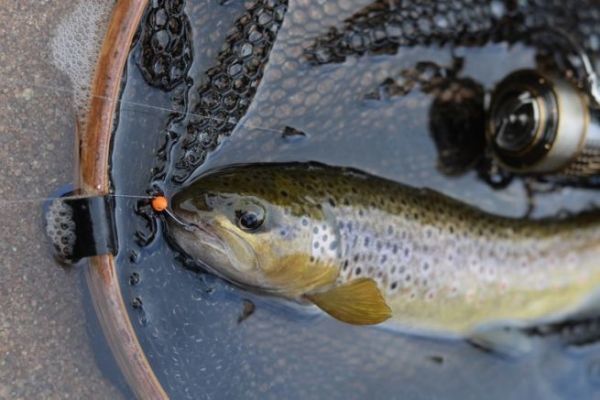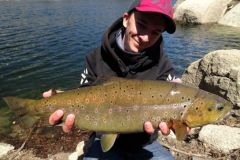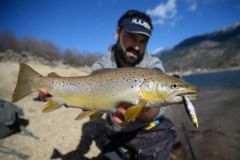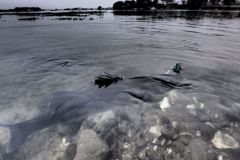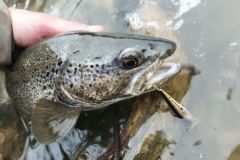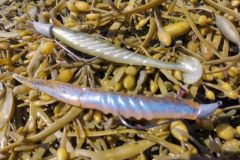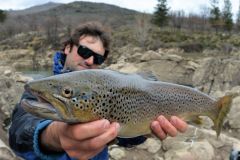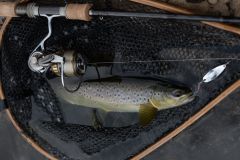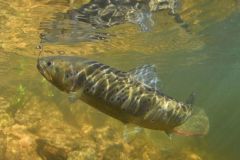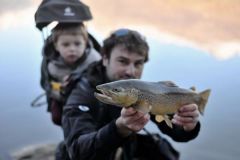The classic round lead head, a real all-rounder
The round lead head is the most commonly used lead head. It is very versatile and offers the possibility to fish efficiently in many biotopes with many types of soft lures.
It allows to present to the salmonids the big families of soft lures: shads, finesse, creatures, worms, tubes... This is what makes it so popular. Moreover, they are very easily available in many sizes and in all weights, whether in lead or tungsten.
Nevertheless, I recommend the use of round lead heads in certain conditions where they are very relevant.
This is the case in rivers when fishing "downstream" with shad. The round lead head "keels" the soft lure well and presents itself head first cleanly facing the current. It's a perfect setup to comb all the veins and for a methodical fishing of the currents, by leading the lure in the eddies, behind or in front of the obstacles.
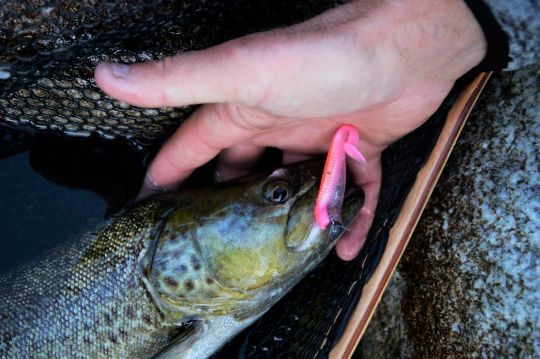
I also use round lead heads in lakes, because the spherical weights allow the lure to reach the bottom quickly with an almost vertical cast. This allows to fish hollow, again, and to follow the relief of the bottom.
Finally, I use the round lead heads a lot to fish vertical structures or when I need my soft lure to sink precisely into obstacles. The ballast drives the lure well and it is possible to fish precisely in restricted places. This is the case for bridge piers, cliffs, docks, logjams and roots...
Sharp lead heads for more vivid animations
In addition to round sinkers, the other major family of sinkers to master when fishing for trout with soft lures is the family of pointed sinkers.
Contrary to the round lead heads which bring a lot of stability, the pointed lead head is more hydrodynamic and splits the water better. It offers the possibility of more lively and ample animations. They allow to animate in dart, that is to say not only from top to bottom, but by provoking shifts from right to left of big amplitudes. This type of animation often triggers attacks from salmonids that would otherwise be content to follow the lure.
I use this type of pointed lead head with mainly finesse lures or shads. This allows the shad to have more swimming amplitude, but its paddle slows down slightly the amplitude of the movements.
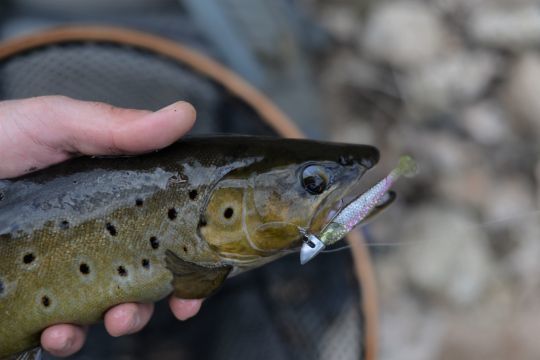
This type of lead head is very relevant in rivers to fish upstream, to bring back quickly the lure by going downstream and by animating.
I also use this type of head associated with the finesse to fish large volumes of water in lake and to make rise the big salmonids.
Tungsten or lead, which material to choose?
Lead is a very dense and inexpensive material. It is very often used traditionally in fishing for many types of ballast. It is relatively easy to work with and can be used to create complex ballast shapes, especially pointed lead heads.
Tungsten is denser than lead. That is to say that for the same mass, it will be less voluminous. This is very relevant and interesting for mounting tiny soft lures or for food fishing. The ballast is very discreet and allows natural and minimalist presentations.
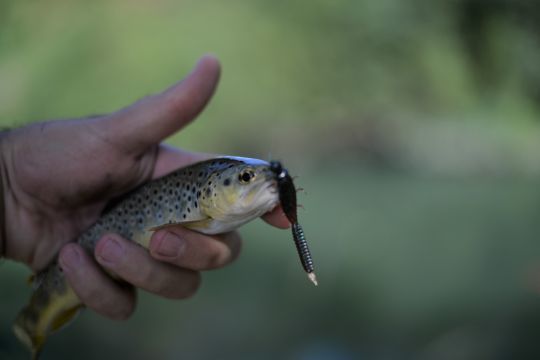
In addition to this density, tungsten also has the property of being harder than lead. This makes it more resonant and it allows a better perception of the bottom. This is a very interesting asset when fishing strong currents or in strong winds when the perception of the lure is blurred. The tungsten which touches the substrate transmits waves which are more easily perceptible in the rod than when the ballast is in lead.
The disadvantage of tungsten is that it has a very high melting point, which makes it difficult to use for complex shapes (only machining and powder metallurgy, no casting possible or too expensive).
